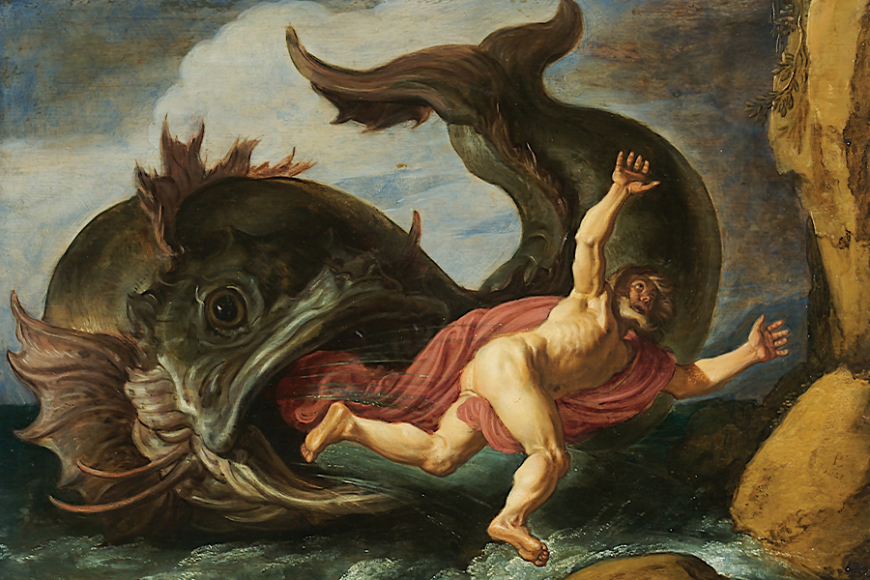During the summer of 1891, newspapers in North America and Great Britain began running a story regarding an extraordinary event that took place off the Falkland Islands. According to the story, sailors from the vessel Star of the East harpooned a whale that thrashed violently in its death throes and overturned a longboat, plunging its two sailors into the ocean waves. The men were not rescued and the whale died after several hours.
The vessel hauled in the whale’s carcass and the crew spent the remainder of the day and the following morning cutting it into pieces and retrieving its fat. But during that second day, the story goes, the sailors noticed something moving within the whale’s stomach. When the stomach was cut open, the sailors discovered one of the missing men, James Bartley, had been alive inside the whale.
According to the story, Bartley did not emerge unscathed — his skin was bleached white and wrinkled from the gastric juices within the whale’s stomach. After overcoming the psychological trauma of what occurred, Bartley reportedly said he had air to breathe but the heat of the stomach caused him to pass out during the nearly 36 hours of imprisonment.
Bartley’s story would circulate for years and was cited by religious journals as confirmation that the Biblical story of Jonah being swallowed by a gigantic sea creature and surviving in its body for three days could have taken place.
Among the books that are compiled into the Bible, Jonah always seemed to stand out in regard to content — and not just because of his miraculous survival.
“Although the Book of Jonah is included among the prophetic books in the Bible, it is quite different from the others,” explains Jeffrey Peters, a scholar at Catholic University of America in Washington, D.C. “Normally, such books begin with God coming down, anointing a prophet and sending him out to the world. It is this last part that is central to their stories, but this part is not the focus of Jonah’s story. Instead, his tale is of one running from God, and the plot of the story focuses on Jonah’s conversion back to following God’s command over him convincing others. It is a direct and personal story among works that focus more on law and society as a whole. In essence, Jonah represents us, and his story is our story.”
Jonah’s story also prefigures that of Jesus, with the prophet’s experience in the belly of the beast mirroring Jesus’ death, Crucifixion and Resurrection in the Gospels:
“An evil and adulterous generation seeks after a sign, and no sign will be given to it except the sign of the prophet Jonah,” Jesus says in Matthew 12:39-40. “For as Jonah was three days and three nights in the belly of the great fish, so will the Son of Man be three days and three nights in the heart of the earth.”
Nonetheless, the story of Jonah became baffling over the centuries as a greater understanding of marine biology found little evidence of any known ocean creature that could ingest an intact human without damaging its digestive system or its prey.
“I think extant sperm whales are known to swallow large objects — big squid or at least large chunks of big squid, have been found in their stomachs,” says Matthew C. Lamanna, an associate curator at Carnegie Museum of Natural History in Pittsburgh.
Of course, squids don’t have bones, which would make their digestion easier. But what if Jonah’s whale was actually a marine creature that survived from the prehistoric period? There is precedent for that so-called “living fossil” scenario, most notably with the coelacanth that was believed to have been extinct since the end of the Cretaceous period but was rediscovered in South Africa in 1938.
“With extinct marine creatures that could potentially have swallowed a human whole, several possibilities come to mind,” Lamanna continues. “There is the very famous megalodon shark, Carcharocles megalodon (sometimes known as Otodus megalodon), and an especially gigantic pliosaur — a big headed, short-necked, four-flippered marine reptile related to the more famous long-necked plesiosaurs — such as Kronosaurus queenslandicus or Pliosaurus funkei. And the ‘killer sperm whale’ Livyatan melvillei. But all were extinct long before the dawn of modern humans.”
For Rev. Adam Thomas, rector of St. Mark’s Episcopal Church in Mystic, Connecticut, the key is understanding the creature that swallowed Jonah was not just any old animal.
“In the Hebrew text, it said the fish was appointed by God for this one purpose,” he said. “It was designated to do this specific act.”
Thomas added that the creature should not be seen as a punishment vehicle for Jonah’s disobedience of God’s command, but as a “transportational vehicle to get Jonah back on track” by bringing him across the Mediterranean to Nineveh in order to fulfill God’s plan for him.
Thomas is among the theologians who do not believe the aquatic aspect of Jonah’s life actually took place, but he acknowledged its mythic nature enhances the lesson. “I think it is kind of neat,” he adds.
But what about James Bartley surviving inside of a whale? No photograph of him is known to exist, so there is no physical confirmation of his skin-bleaching experience. In 1907, the British academic journal The Expository Times published a letter from Mrs. John Killam, the widow of the ship’s captain, regarding what took place.
“There is not one word of truth in the whale story,” she wrote. “I was with my husband all the years he was in the Star of the East. There was never a man lost overboard while my husband was in her. The sailor has told a great sea yarn.”
Nonetheless, the Bartley story persisted for years — it even turned up in “Ripley’s Believe It or Not” — and has been cited by Biblical literalists. In 1991, Edward B. Davis, a professor at Messiah College, a Christian institution in Pennsylvania, located the original records of the Star of the East in the archives at the Maritime History Archive at Memorial University in St. John’s, Newfoundland. What he did not find in those records was any sailor named James Bartley.
Needless to say, the Bartley story exuded a distinctive piscine aroma.





